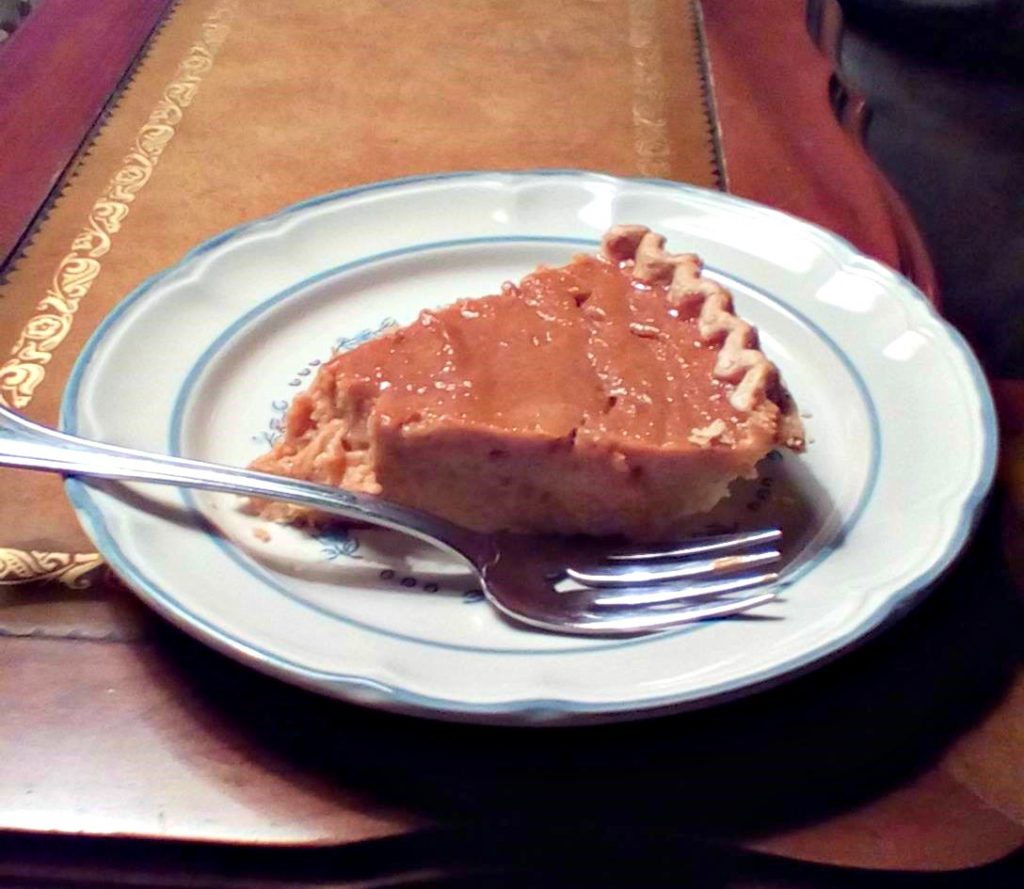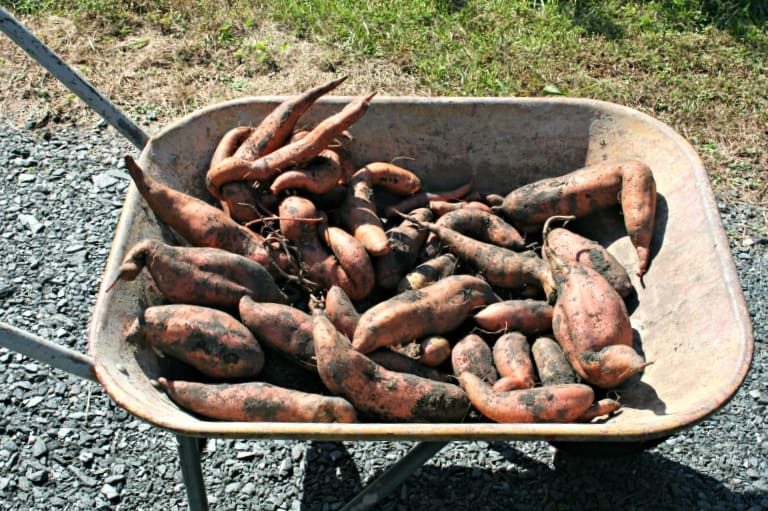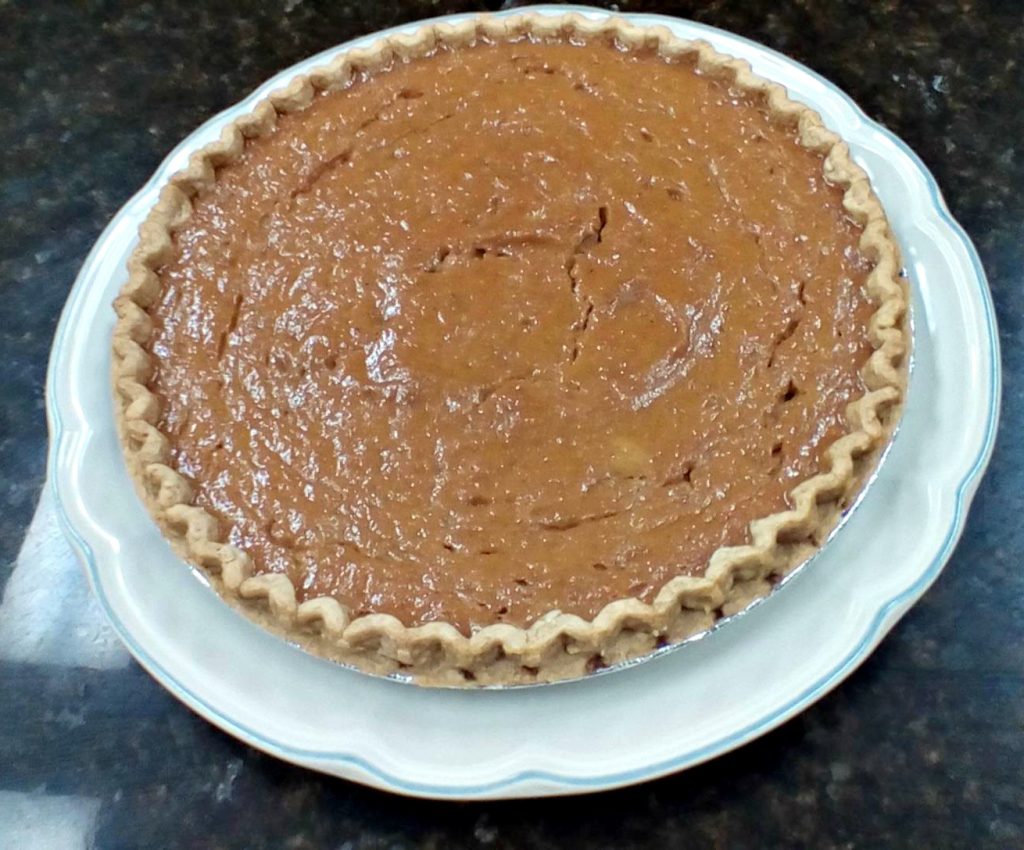It’s sweet potato season here at Seven Oaks Farm, my small farm here in Virginia. And that means enjoying sweet potatoes in all their glory – including as pie.
Sweet potatoes are one of my favorite vegetables to grow in Virginia. The first year I had a garden, I planted them. They seem to flourish in our warm climate and although I always harvest them late in the season, they are quite forgiving. They don’t seem to mind a late harvest and provide me with plenty of sweet potatoes for the pantry.
This spring, I started sweet potato slips, or small, slender roots saved from last year, in water, and then transplanted the newly rooted slips into the garden. Eight slips were started; six survived. Five of the six survived the transplanting process. The results: approximately 25 pounds of sweet potatoes. I’d say that’s a success.
Right now, my harvest awaits in the garage, but next weekend, I hope to can my sweet potatoes. Canned sweet potatoes can be used to make mashed sweet potatoes or for the filling of a sweet potato pie.
Sweet potato pie tastes much like pumpkin pie. Perhaps it’s the spices, but the color and consistency are similar, too. It lacks the certain ‘zing’ of pumpkin but contains a little less sugar. I like to think I’m getting my vitamin A from my sweet potato pie. Yes, that’s what I tell myself…
This recipes for sweet potato pie comes out slightly firmer and with a taste closer to pumpkin pie. I made it this weekend to use up last year’s canned sweet potatoes; if you have some in your pantry, it’s perfect for pie filling. If you only have fresh sweet potatoes, they must be peeled, cooked, and mashed before using as your pie filling.
Enjoy!
Sweet Potato Pie Recipe
For one 9″, deep dish piecrust, you will need:
- Great Value (Walmart brand) premade, frozen pie crust.
- 1 quart of canned sweet potatoes (about 2 cups), drained
- 1/2 cup of sugar
- 2/3 stick of butter or margarine
- 1 cup evaporated milk
- 2 eggs
- 1 teaspoon vanilla extract
- 1/2 teaspoon cinnamon
- 1/8 teaspoon nutmeg
- 1/4 teaspoon salt
Preheat the oven to 400 degrees F. Place one frozen pie shell on a baking sheet. Prick the bottom of the pastry shell with a fork several times. Bake for 10 minutes, then allow to cool while you prepare the pie filling.
In an electric mixer, beat together the sugar and butter or margarine; add evaporated milk, eggs, and vanilla. Mix in the canned sweet potatoes. Keep on medium speed, mixing in cinnamon, nutmeg, and salt. Mix for one to two minutes. Pour into prepared pastry shell. Bake at 400 for 10 minutes, then lower temperature to 350. Bake for 40-50 minutes at 350 or until the center of the pie is firm. We “jiggle” the pie gently; if the middle swooshes or wiggles too much, it isn’t set yet. Let cool, enjoy, and place leftovers in the fridge.








[…] sweet potatoes in the pantry. I’m sick of baking them, baking them in a casserole, and making pies and soup out of them (although the soup was really good). I decided to try my own hand at making a […]